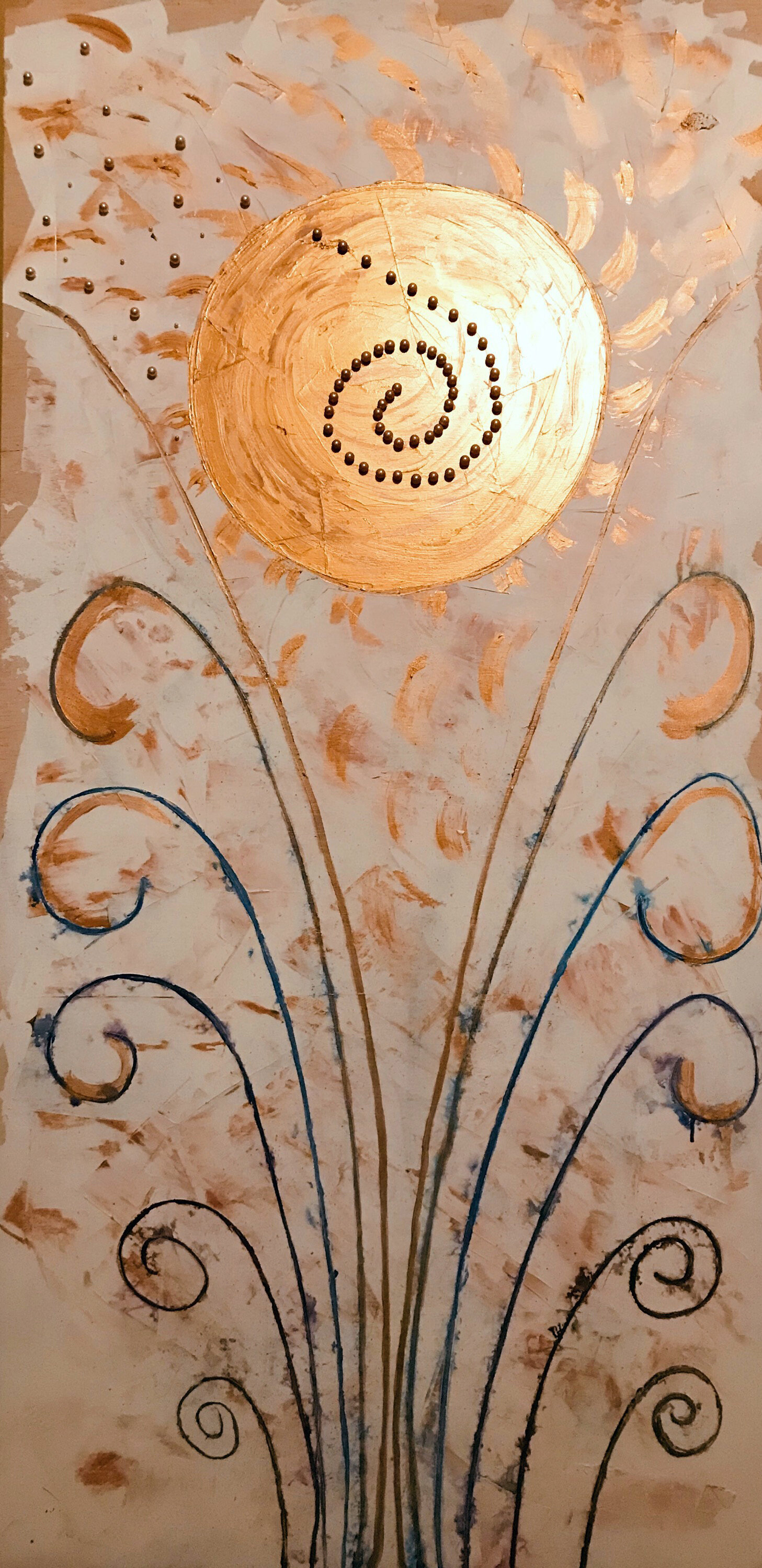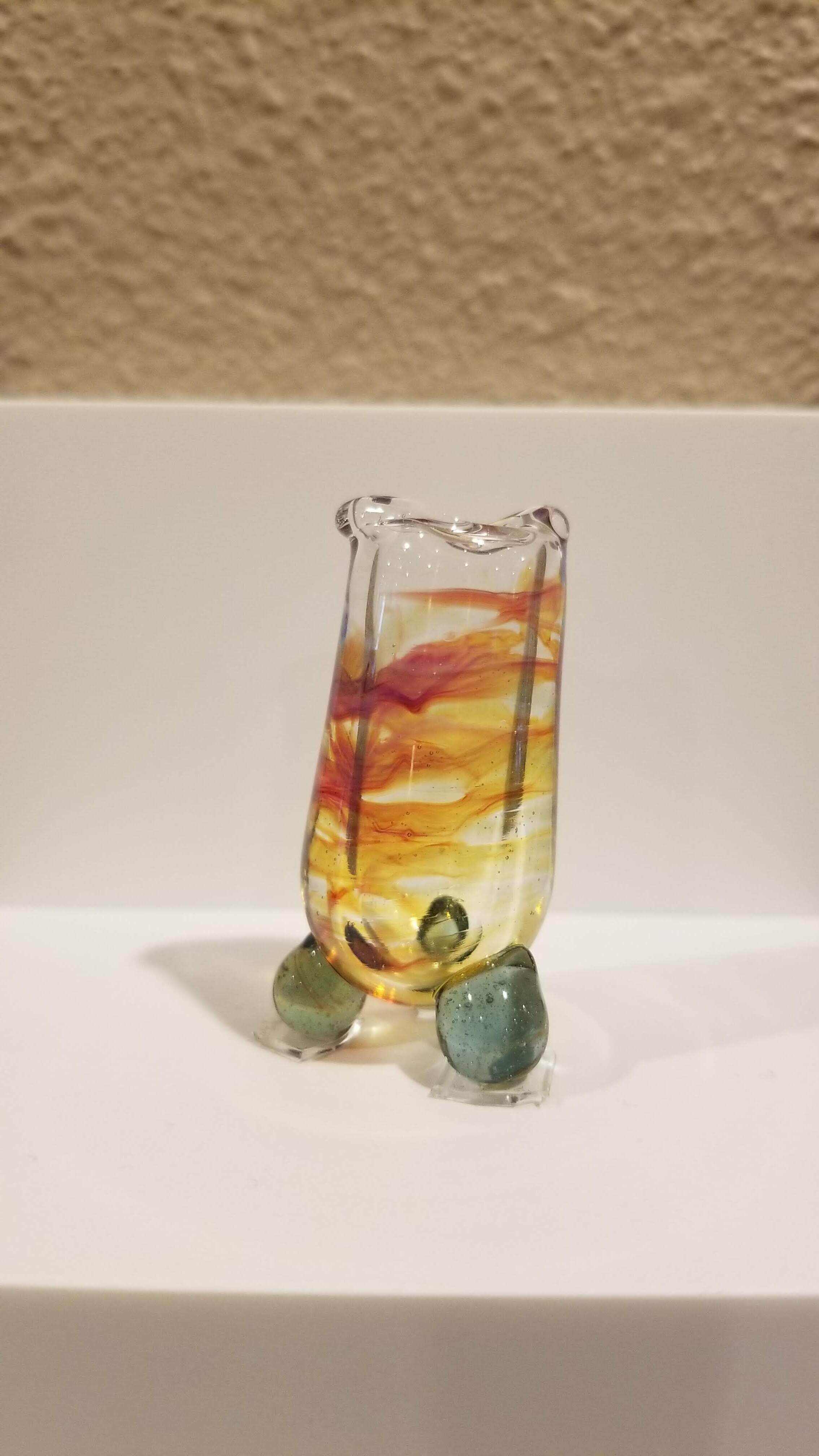In October, I invited artists in the area to an Art and Soul Challenge:
The first question God asks of man in the Bible is found in Genesis. He asks, "Where are you?" For this Art and Soul Challenge, I invite you to consider how you would answer this question right now, and how you could depict your answer visually. Use any medium you like, as long as your piece arrives to me ready to hang.
I was reading Trevor Hudson's Questions God Asks Us and it felt like an invitation to walk with God. I thought that a group show would be more effective than a solo show because a variety of answers, methods and viewpoints might make it more likely that a viewer would feel drawn into the conversation. I wanted people to go home thinking about how they might answer God's question themselves.
The show was up October 20th to December 1st. It was such an interesting mix of new and practiced artists.
I want to share two emails (of many) I received from participating artists because they illustrate what I consider to be the goal of art in the church. I reprint them here with permission. The first email is from DN, a practiced artist, who I am just getting to know and love:
I had fun and it did open some things for me. I "got" the picture in my head. Hiding in the Garden of Eden....The cross....No longer needing to hide. But my plan was to put little bandaids or black strips across my figure in several places to symbolize that there are things that I take back, things that I still try to hide from God. Sins. But when I put them on the figure, they marred it. The truth was that in my eyes I am marred but in God's eyes he sees me whole and beautiful, His bride. I made the figure out of paper I marbled. When I looked at the finished figure, I saw a person full of this gorgeous and flowing creativity and, for the first time, I felt like I saw myself as God saw me and as how He designed/created me. I saw myself dancing, worshipping. When God asks, "Where are you?" I heard myself answer. "I am here Lord. Speak -- for your servant is listening." This ended up being a profound experience for me.
This second email is from a new artist, MS, who wrote up her experience with this process. Her honesty and vulnerability touch me:
I paint watercolors. Most people don’t know that about me. Well, technically I try to paint watercolors. I dream of painting, but it is a struggle for me. I know many people who are so talented and can lay down these beautiful strokes of a brush with fabulous hues and create these amazing paintings. I find it crazy stressful! Staring at a quarter sheet of 140lb Arches paper, better known as a thick piece of 15x22 paper, can bring such fear. The wonderful lady I have taken some classes from says to herself each time she starts, ‘Going in.’ I tend to think, ‘Oh crap, time to start.’
For me, painting brings up a mix of emotions. I love part of it and hate part of it. I love the colors and interaction of the paint when it hits the paper--how it can swirl and create these patterns that are amazing. The outcome will be different if you put it down on a dry sheet of paper or if you get the sheet wet first. But the imaginative things I see in my head die a quick and sudden death when I try to put them on paper. My brain and my hand are definitely not creatively attached. Heaven forbid I actually do paint a section I like because then I am frozen thinking at any moment I could do something that will ruin the little bit of good I have done. I don’t finish many paintings. I can’t get past the roadblocks in my head.
Life can be kind of like that though. Some of us struggle day after day, trying to do what is right and often failing. But every once in a while, we have a moment where everything comes together. What follows is the fear that our next step could undo all the positive we have done.
Recently, I was included in an email that went out asking people if they wanted to contribute to an art display we were going to have here at the church. We were to answer the question, ‘Where are you?’ in response to God asking that of Adam and Eve in the garden. Where are you right now and how would you depict your answer visually? Better yet, how on earth had I got on that email list?! It had to be a mistake. Well- turns out it wasn’t. After much tossing and turning and turmoil I decided to try. I only told one other person who also paints. That way if I chickened out, only she would know.
Fail, fail, fail. I tried going with the idea that I am still trying to find my wings. I tried a little hummingbird and a dragonfly but I just got stuck. I even tried a little koi fish thinking I could go with a fish out of water theme. Kinda fitting, right? Fail again. That little voice in my head that always says "you are not good enough" was throwing a party. As the days drew closer, I had already decided to quit about 20 times. How could I turn something in when I was so terrible at it? No one would want to see it. Trust me on that one.
A couple days before I needed to turn it in, I was chatting with a friend. We were laughing about how great it is that God isn’t finished with us. We are a work in progress. Then it clicked. My paintings are like me. Unfinished. So I closed my eyes and turned in all three that I had struggled with.
Unfinished
By Melissa Skeels
Watercolor
'I am confident of this, that the one who began a good work among you will bring it to completion by the day of Jesus Christ.’ Philippians 1:6 NRSV
I am a beautiful work of art in process by God’s grace as He continues to add to my palette with new hues of color while softening my edges, adjusting my perspective, and allowing me to take shape.
It was done, I was done, and I was never going to go through all that ‘turning in a painting’ stress again. Oh- and to make it even better, everyone else’s that were now hanging in the church were these beautiful paintings.
Well, it turns out I was wrong. Today I received an email, “Hi Melissa— your hummingbird blessed my friend today. She talked about going to an aviary in Arizona where hummingbirds fly freely. She plans to go there this week as a treat to remind her about God’s love. We talked about it in the hallway. Then when she was leaving she noticed your bird and said, “isn’t God so good— here I was just talking about hummingbirds and here is a beautiful painting of one.” Thought you would like that and I was thinking...I would love to give your painting to her. Would you be willing to sell it? I know you talked about doing more to it but I think it is lovely just as it is.”
So yeah, that made my cry. My hours of struggle were used in some little way by God. I know that shouldn’t be surprising since God uses people all the time. But I work behind the scenes so I don’t usually get to see my involvement in it. But God is working in us and through us every day. Whether we notice it or feel it or even get to hear about it, He is still there. Shaping and molding. Best of all He promises to keep doing a good work in us until Jesus returns. Thank goodness, right?!
Yes, I plan to keep struggling and painting. Maybe one day it will start getting easier. But maybe it isn’t supposed to get easier. Maybe striving is the point.
Maybe. I think for me, engagement is the point, and I think all the artists who participated gave us that gift. Their willingness to engage their strengths and weaknesses, fears and faith, with God and people through art blessed them, blessed the congregation and blessed me. And, I'm pretty sure God was smiling too.


























